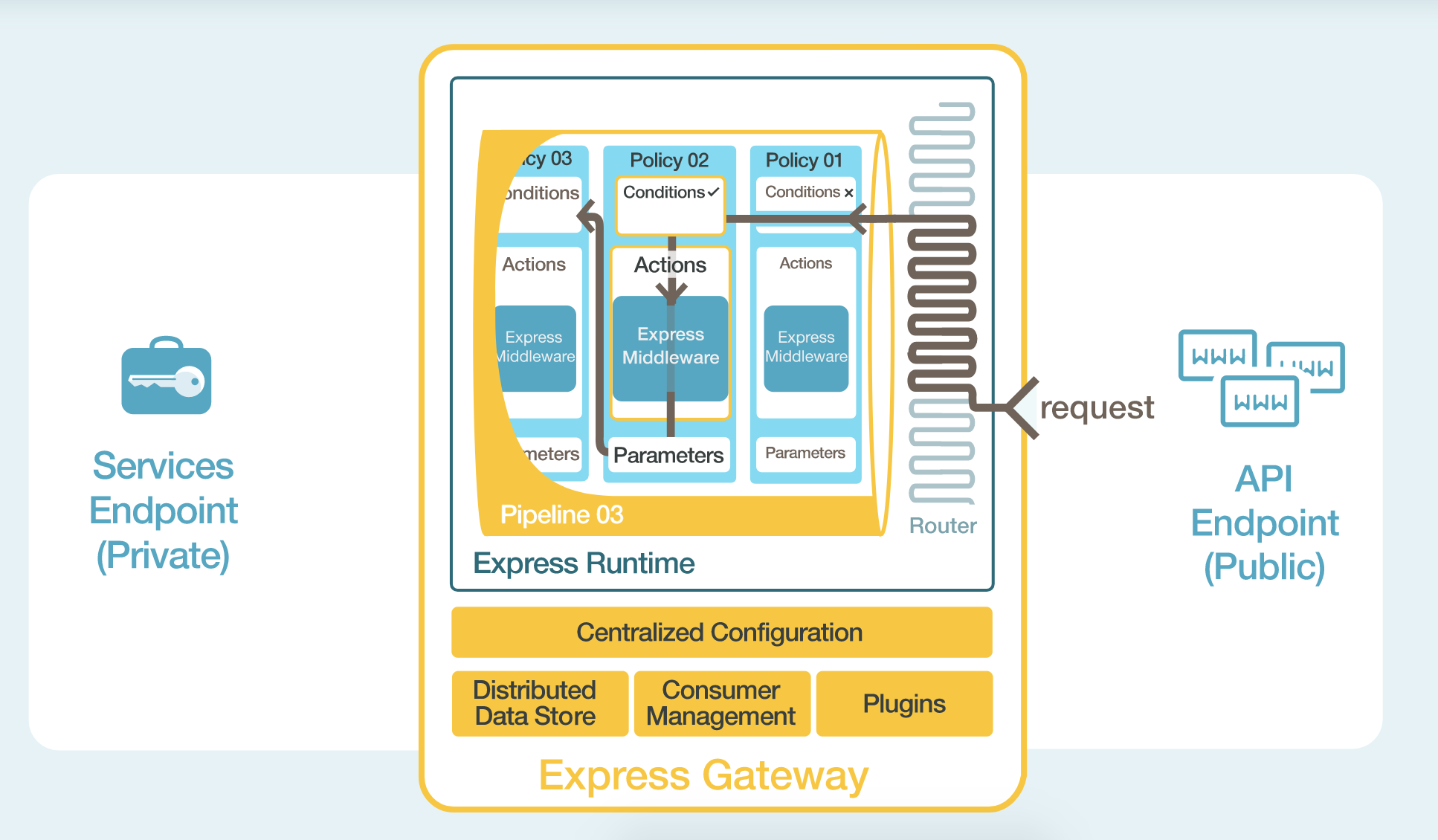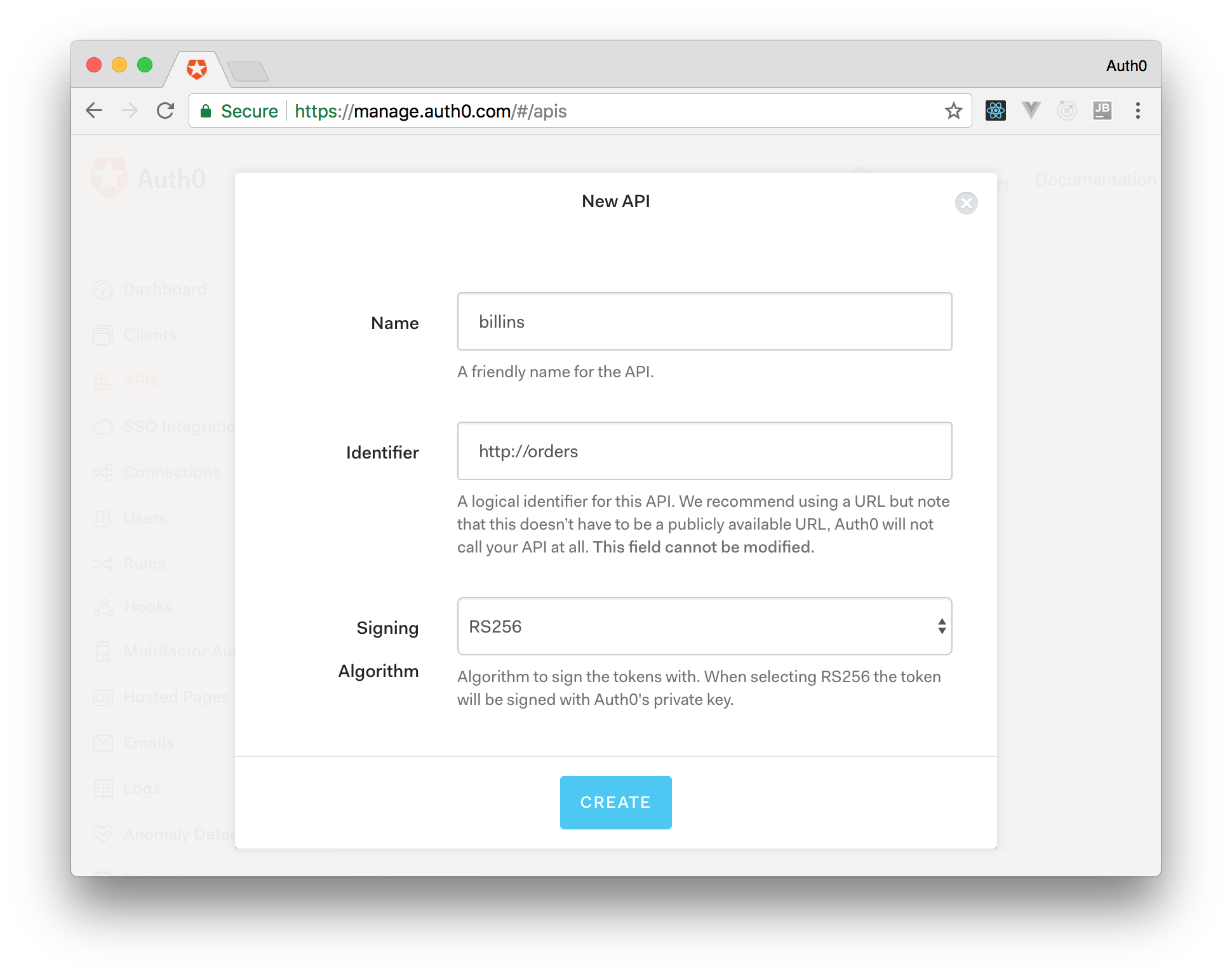TL;DR: In this tutorial, I'll show you how an API Gateway can be a great tool when you have multiple microservices that need to share multiple tasks. You can get the code example here.
Introduction
Microservices is an architectural style with the basic idea of decomposing a system in a collection of services, each one implementing a particular capability/feature of the system itself based on business, technical, and other requirements.
This has several benefits compared to a monolithic approach:
- It enables the continuous delivery of large, complex applications by deploying the singular pieces independently.
- It enables to select the framework and the programming language that you think it's the best for the job. You can use the latest technologies on a microservice while keep the other parts in legacy mode.
- It improves your teams agility, the ability to iterate on a small, focused piece of functionality quickly and to see results.
- It improves the resiliency of your system because a crash of a microservice does not halt your entire system (you can gracefully degrade the user experience).
The above points can be summarized with two keywords: independence and isolation.
This concept has been riding high during the last years with blog posts, articles, websites, and even dedicated conferences although this is nothing really new—but rather a culmination of best practices in the modern web era, pushed by a tech giant that felt the need almost ten years ago.
Most of the time we don't necessarily have the same web scale, but we can benefit anyway from the paradigm of microservices.
Challenges
The challenge though is that with microservices the knowledge is spread among multiple little pieces. However, on the other hand, the end game of your application is, most of the time, the exposure of what you're building through an uniform API.
So, we have two sides of the same coin: on one side, we want to break up our app into a set of services and evergreen them; on the other, we still want to offer an uniform experience.
Suppose you need to create a Coffee order system that will let people, registered as Customers, request for a coffee through an Order.
After a bunch of meetings, everybody in the company agrees that the User and registration part of your application will be written in JavaScript and run on Node.js, while the Order system will be written in Go. Among the technical requirements, you want all the requests must be authenticated and, in order to prevent flooding, you want to put a rate limiting policy.
Now, with such requirements, a couple of questions stand:
- Writing idiomatic JavaScript is different than writing idiomatic Go. According to the programming language and the framework you're using the API you're exposing in Go might be completely different with regards to the other one exposed from the JavaScript microservice. How do you make sure that the final API—intended as the the whole surface exposed by your application—is uniform and consistent?
- Rate limiting, authentication, authorization, and a bunch of other stuff are things that should be shared across multiple microservices in your organisation. If you re-implement these things in each single microservice, you are duplicating the code at first, but more importantly you have two different pieces of software to maintain. This will mean that you will also need to make sure they behave in the same way (that's not trivial, since you could be potentially using two libraries for that).
Solution
It turns out that, no matter the way you're doing microservices (whether you're dividing your system by business features, by domain, or coming up with a microservice architecture starting from your data), there are parts of them that are sharing functionalities.
Microservices need a superglue and that glue is an API Gateway.
API Gateway
An API Gateway is a centralized middleware that encapsulates the internal system architecture and provides an API that can be shaped based on real client needs rather than simply returning what the particular microservice is sending you back. These gateways are effectively implementing the facade pattern in the microservices world.
API Gateway can have other responsibilities such as authentication, monitoring, load balancing, caching, request shaping and management, and static response handling.
API Gateway in Practice
Let's move from theory to practice and see how to configure an API Gateway to serve our needs.
Let's suppose that we have Customer and Order microservices listening to http://customers and http://orders respectively. Using Docker or Kubernetes achieving such scenario should be fairly easy.
We will configure an instance of an API Gateway that will sit on the edge of our system. This gateway will serve as a router for our microservices, but we'll also move some shared logic from the microservices to it. This will enable our applications to focus on the business logic.
This gateway will also throttle all the requests based on clients' IP addresses and make sure that all the requests are authenticated based on a JWT that Auth0 is going to provide. Auth0 will work as our system of record for our users.
There are multiple API Gateways on the market. Some of them are offered by big software companies as a managed hosted solution and others are open source products. Of course, you can technically write your own solution too, but why reinvent the wheel? Instead, let's take advantage of Express Gateway.
Meet Express Gateway
Express Gateway is an API Gateway that sits at the heart of any microservices architecture (regardless of what language or platform you're using), securing the different pieces and exposing them through APIs. All these magic works by using Node.js, ExpressJS, and Express middleware.
Express Gateway centralizes all the application configuration for the API use case into one YAML (or JSON) file. Within the YAML file there is an easy to understand description of how and what is configured.
Express Gateway entities, like policies, pipelines, conditions, and actions, wrap around Express middleware to make it dynamic. Any Express middleware can be plugged into Express Gateway to take advantage of its dynamic capabilities. It also features an hot-reload mechanism so you can change its configuration without having to restart the gateway at all.
Hands On
Installing Express Gateway is dead simple:
~$ npm i -g express-gateway
This will install the command line eg in your system, so you can now bootstrap a new gateway instance:
~$ eg gateway create
? What\'s the name of your Express Gateway? eg-example
? Where would you like to install your Express Gateway? eg-example
? What type of Express Gateway do you want to create? Getting Started with…
created package.json
created server.js
... To start eg-example, run the following commands:
cd eg-example && npm startNext, change the working directory to eg-example (cd eg-example) and modify the gateway.config.yml file. This is the file that controls your gateway’s behavior. For a complete configuration reference, you can see the documentation.
http:
port: 8080
apiEndpoints:
customers:
host: customers.company.com
orders:
host: orders.company.com
serviceEndpoints:
customers:
url: 'http://customers'
orders:
url: 'http://orders'
policies:
- jwt
- proxy
- rate-limit
pipelines:
customers:
apiEndpoints:
- customers
policies:
- rate-limit:
- action:
max: 1
windowMs: 1000
- jwt:
- action:
secretOrPublicKeyFile: ./key/pubKey.pem
checkCredentialExistence: false
- proxy:
- action:
serviceEndpoint: customers
changeOrigin: true
orders:
apiEndpoints:
- orders
policies:
- rate-limit:
- action:
max: 1
windowMs: 1000
- jwt:
- action:
secretOrPublicKeyFile: ./key/pubKey.pem
checkCredentialExistence: false
- proxy:
- action:
serviceEndpoint: orders
changeOrigin: trueLet's go through the main part of the current configuration. The gateway will listen for HTTP requests on port 8080 (you might want to change it to 80 when going into production). Then, we have defined two pipelines (one per microservice) where we have enabled the rate limit policy and the
JWT verification policy.
Note: the configuration is shown in a extended form for clarity. However, it can be shortened by using YAML references.
Note: if you want to test this locally, you'll need to make sure that
company.comdomain points to your local machine. This can be achieved by usingdnsmasqor by modifying your hosts file, putting bothcustomers.company.comandorders.company.comto point tolocalhost. Another alternative would be to manually put theHOSTheader to the correct value while issuing requests.
Configure the Client and the User in Auth0
Let's now configure Auth0 to work as our system of record for users and issue JWTs for them. If you don't already have an Auth0 account, sign up for a free one now.
From the Auth0 management dashboard, click on the APIs menu item, and then on the Create API button. You will need to give your API a name and an identifier. The name can be anything you choose, so make it as descriptive as you want. The identifier will be used to identify your API, this field cannot be changed once set.
For our example, I'll name the API billings and identify it as http://orders. I'll also leave the signing algorithm as RS256 and click on the Create API button.
Now point your browser to https://yourAPI.auth0.com/pem (where yourAPI is the Auth0 domain that you chose when creating your account) and download the public key file. This is the key that we will
use to verify that the JSON Web Tokens (JWTs) issued by Auth0 are valid. Save it as pubKey.pem and place it in the same directory specified in secretOrPublicKeyFile parameter of the jwt policy (that is, in a directory called key in the project root).
The API Gateway has now been configured correctly to handle the scenarios.
Test Drive
Start the gateway using npm start in the project root. Once running, let's try to issue a couple of requests to it:
$ curl http://customers.company.com:8080 & curl http://customers.company.com:8080
$ [1] 4495
$ Unauthorized
$ [1]+ Done
$ Too many requests, please try again later.You can see that the first request has been denied with Unauthorized status. That's because we didn't
provide any JWT with the request, so it didn't go through.
Moreover, the second request has been refused by the rate limiting policy, without event arriving to the authentication phase. Policies are executed following the definition order in the configuration file.
Now grab any HTTP client and let's configure it to start an OAuth 2.0 authorization process against our API hosted in Auth0. We can grab all the necessary parameters going on Applications -> billings (Test Application) -> Settings -> Advanced Settings -> Endpoints
In my case, I am going to use curl, but you can use the one you prefer:
curl --request POST \
--url https://bkrebs.auth0.com/oauth/token \
--header 'content-type: application/json' \
--data '{
"client_id":"my-client-id-copied-from-auth0-application",
"client_secret":"my-super-secret-copied-from-auth0-application",
"audience":"http://orders",
"grant_type":"client_credentials"
}'Now, by simply copying the access_token attribute from the response, we will be able to communicate with the API through Express Gateway (you can verify the returned token by using JWT.io). This is the token to be used in order to access the protected resource. So, just try to issue requests making sure that the token is now sent as a Bearer Authorization to the endpoint. The response should hopefully be 200.
export JWT="ey...the-rest-of-the-token"
curl -H "Authorization: Bearer "$JWT http://customers.company.com:8080Conclusions
Thanks to Express Gateway, we have moved two shared concerns (authentication and rate limiting) from the microservices to a centralized middleware that—no matter how many microservices we're going to have—it is going to behave in a consistent way.
We can now safely remove the code handling that from our microservices and assume that, if they're receiving a request, it's both authenticated and it passed the rate-limit checks. You now have guarantees.
However, this is just the tip of the iceberg.
The benefits of an API Gateway do not stop here. In this example, we've shown how it can make some checks on inbound requests, but it can also be used to modify the outbound responses.
In the initial part of the article, we were talking about the uniform API. An API Gateway could transform the response coming from a particular microservice so that the returned payload is consistent with the other microservices, even though the original data is shaped in a different way. Hopefully, we will explore this in a future article.
In the meantime, you can see some other interesting use cases on Express Gateway website.







